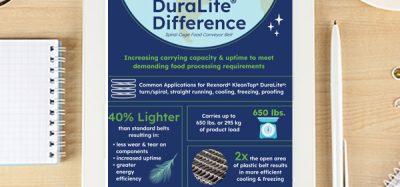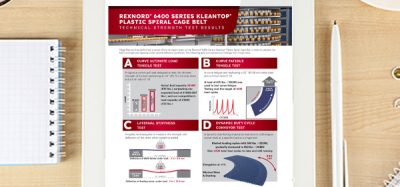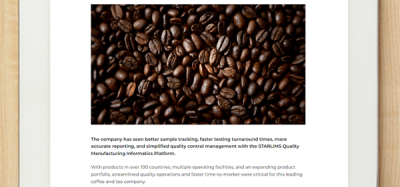Automation in the food industry
- Like
- Digg
- Del
- Tumblr
- VKontakte
- Buffer
- Love This
- Odnoklassniki
- Meneame
- Blogger
- Amazon
- Yahoo Mail
- Gmail
- AOL
- Newsvine
- HackerNews
- Evernote
- MySpace
- Mail.ru
- Viadeo
- Line
- Comments
- Yummly
- SMS
- Viber
- Telegram
- Subscribe
- Skype
- Facebook Messenger
- Kakao
- LiveJournal
- Yammer
- Edgar
- Fintel
- Mix
- Instapaper
- Copy Link
Posted: 6 September 2011 | Phil Hoden, Division Reliability Manager, PepsiCo International | No comments yet
Highly competitive retailers constantly squeezing down prices, rising raw material costs and soaring utility charges in a labour-intensive manufacturing environment; why shouldn’t food manufacturers look towards automating their manufacturing processes?
Automating food production can reap many benefits. The ability to replicate the appearance and quality of a product with the minimum use of ingredients not only improves line efficiencies leading to bottom-line profit, but also can potentially increase sales. At the same time, improving the traceability of raw ingredients will provide the added benefit of improved food safety. All of this sounds too good to be true, so why does the food industry lag so far behind other major manufacturers such as the automotive and pharmaceutical industries?
Highly competitive retailers constantly squeezing down prices, rising raw material costs and soaring utility charges in a labour-intensive manufacturing environment; why shouldn’t food manufacturers look towards automating their manufacturing processes? Automating food production can reap many benefits. The ability to replicate the appearance and quality of a product with the minimum use of ingredients not only improves line efficiencies leading to bottom-line profit, but also can potentially increase sales. At the same time, improving the traceability of raw ingredients will provide the added benefit of improved food safety. All of this sounds too good to be true, so why does the food industry lag so far behind other major manufacturers such as the automotive and pharmaceutical industries?
Highly competitive retailers constantly squeezing down prices, rising raw material costs and soaring utility charges in a labour-intensive manufacturing environment; why shouldn’t food manufacturers look towards automating their manufacturing processes?
Automating food production can reap many benefits. The ability to replicate the appearance and quality of a product with the minimum use of ingredients not only improves line efficiencies leading to bottom-line profit, but also can potentially increase sales. At the same time, improving the traceability of raw ingredients will provide the added benefit of improved food safety. All of this sounds too good to be true, so why does the food industry lag so far behind other major manufacturers such as the automotive and pharmaceutical industries?
The problem facing a large section of the food industry is that line automation here is not the same as line automation in the car industry or the pharmaceutical industry, from where the vast majority of automation has evolved. In these industries, components or products are usually uniform in shape, size, weight and texture and can be manipulated easily by artificial hands and placed exactly where they are required at speed and without damage.
Within the food industry, primary pack – aging processes requiring the manipulation of raw food into its initial carton or wrapper are difficult because many basic products or components of a product – whether it is pasta, sausages, tomatoes, cheese or potatoes – vary in size, shape, quality, weight and texture, making it a formidable challenge for highly automated robots to manipulate them at the required line efficiencies and still maintain quality and integrity of the product.
Automation of raw food product also requires high standards of machine sanitation. This requires components that are easily accessible and can be dismantled for cleaning or washing with chemicals. Reassembly must be simple and quick, as the cleaning process may not necessarily be at the end of the shift – it could be for a product changeover where the previous product may have contained allergens such as nuts or celery.
Getting back into production again is of paramount importance and components will often be quickly deluged during the clean-down process. Waterproofing of components and reassembly has proven to be a challenge in the food sector; IP67 is the very minimum requirement in most food manufacturing environments and once the equipment has been stripped down for cleaning, this rating is often compromised. Furthermore, correct and swift disassembly and reassembly of machinery components can prove difficult in a high staff turnover environment, where training and retraining in the process are likely to be an ongoing problem.
Machinery must also be manufactured from quality grade stainless steel and designed to avoid microbiological traps or water stagnation. In order to achieve this, every aspect of machine design must be carefully thought through; this includes the selection of sub-components such as motors and gearboxes which often have cooling fins or strengthening ribs on them, providing ideal hiding places for bacteriological organisms to grow.
The selection of food-grade oils and greases for gearboxes and lubrication systems must be considered. These all impact on the ability to automate successfully. Even today, many automated lines fall short of meeting some of these criteria and often, some time later when the equipment is in use, it is discovered that there is a water trap or hygiene problem that must be rectified quickly. This emphasises the infancy in which some automated processes are at within the food sector.
Another major influencer in the decision to automate or not is the food retailers’ demand for choice of product on their shelves. Consumers like to have choice, and choice is a constantly varying phenomenon that contrasts sharply with how lines may automate.
Providing a choice to the consumer could mean a totally new product launch or eating experience with new ingredients or cooking processes, or it may simply mean alternative packaging formats in the form of size, weight, ingredients or shape, or even a relaunch of an existing product in different packaging to provide package recycling opportunities for the more environmentally-concerned consumer.
The problem is that for it to work effectively, automation usually means the standardisation of product, packaging and appearance. I have seen many line automation projects fall foul of a packaging reformat or ingredients change, requiring the removal of an expensive piece of pick and place or depositing assembly and replacement by an operator because the equipment is not flexible enough to deal with changes in sizes, ingredients or packaging formats.
This plays a fundamental part in any business decision about whether to automate the primary part of the process or not. Where this process isn’t complex or does not require flexibility, the food industry has embraced automation fully. A good example of this is the dairy industry where the process of milk skimming, pasteurisation, homogenisation and even filling into a standard bottle format has long been established. The same can also be largely said for the brewing and bottling industries as a whole.
For the majority of the food industry, automation means largely a focus at either end of the primary packaging area, in either the raw materials and preparation areas or the secondary packaging area.
Raw materials and ingredients preparation areas are normally targeted to provide more and more capacity. Usually, as an organisation grows and the need for capacity increases, within the preparation areas there is a shift away from batch production processes towards a continuous flow of prepared ingredients. The continuous-flow process will not be a significant leap away in technology from the tried-andtested batch processing methods because it is essential to maintain the same taste and texture as the batch method.
Along the way, there may be some labour savings associated with a new continuous flow together with a redesign of the process area, but the majority of the investment is usually aimed at gaining further capacity from a similar proven technology.
At the same time, there may be focus on the secondary packaging end. At this point, the product is already packaged neatly into boxes and can be handled much more easily with automation. Recently, with the intro – duction of pick and place robots, auto palletising and despatching, automation in this area has seen a huge growth within the food sector. This type of automation is common; food is now packaged and has entered a low risk environ – ment – the low risk being far fewer opportunities for contamination by external foreign bodies or organisms. Standard automation technology used in any industry can be gainfully employed here – it’s not so important that a robot is painted or not made from stainless steel or that the oil inside the machine is not food grade.
Standard industry robots are used throughout the secondary packaging process as the norm and extend into auto warehousing facilities and automated dock loading. It is apparent from this that the food industry seems willing to embrace technology wherever it is safe and practical to do so.
Looking to the future
Research evidence suggests that huge opportunities exist within the food industry for automation to take place, especially within the primary packaging processes. As technology improves and the ability to manipulate complex and varying shapes becomes easier, further opportunities for higher levels of automation to take place will be presented.
For automation to be successful it should be approached as a four-way partnership, with the equipment manufacturers and their component suppliers challenged to design ergonomically sound components that are free from potential water traps and biological issues. This means a critical rethink of key component designs such as gearboxes, motors and lubrication systems.
Further consideration for the harsher environment in which the food industries have to operate should also be a factor in equipment design, as these can often be in chilled, damp conditions created from constant wash downs and changeovers.
Reliability and flexibility is at the other end of the spectrum and is obviously a prerequisite for the equipment user, therefore collaboration with the user and their customers is essential to find ways of improving reliability and flexibility of the equipment.
Manufacturers need to be aware that food products and their packaging change constantly to meet ever increasing customer expectations, and the technology must take this into account.
The needs of the food industry differ slightly from the industry norm, but they are not insurmountable. In the last five years or so there have been huge steps in automation and robot design that have taken most of these factors into consideration. There has been an emergence of a wide range of standalone robots, with fully hygienic pick and place capabilities that in theory appear to be able to handle a wide array of raw ingredients.
For the manufacturer of such technology, the future of automation for the food industry looks very promising indeed.







